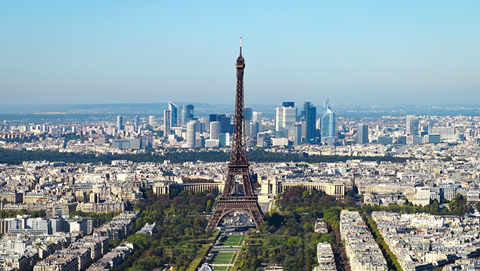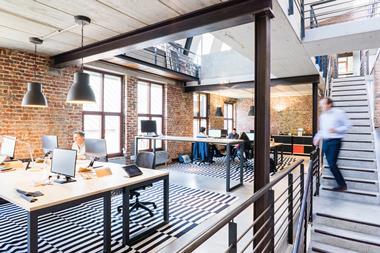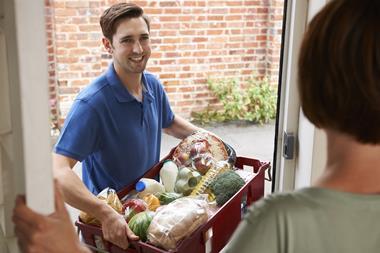Having written my London lockdown chronicles over a period of 18 months, I wanted to add an addendum. After the restrictions of the pandemic, I was overjoyed to have the opportunity to travel to Paris for the first time in a few years.

At 2 hours and 15 minutes on Eurostar from Kings Cross to the Gare du Nord, the journey was so easy. We did encounter a 30-minute delay because there was just one lonely border official checking all our passports, Covid-19 vaccination history and declaration forms. I was told that the animosity created by the ongoing fishing and other disputes with the French has triggered a reluctance to put on additional staff to unlock the bottlenecks. Despite the delay, we arrived in Paris just in time for a late relaxed lunch at a wonderful local restaurant on the left bank.
Having spoken on a panel with Carlos Moreno, architect of ‘the 15-minute city’ I was keen to see how it was working in Paris. In a ‘15-minute city’, everyone is able to meet their needs within a short walk or bike ride from their home. It aims to reconnect people with their local areas and decentralise city life and services.
The concept seems to be workable in Paris where the high density means that the concentration of residents in the city centre is far higher than it is in London. Paris has more than 20,000 people per square kilometer compared to London’s 5,701 people. Everywhere you look in central Paris, the buildings rise to 6 or 7 storeys of apartments often above shops restaurants and cafes at ground floor. Many buildings are constructed around a central courtyard, which you can only catch a glimpse of when one of the large imposing wooden entrance porticos is opened.
You do wonder how residents cope with noise generated by revelers at the outside bars and restaurants at ground level which seems to upset residents in central London. Paris cafe street life has bounced back from lockdown and is something we should aspire to. It was colder than London but the Parisian cafes and brasserie terraces were full and their chairs facing onto the street to better watch the passers by. Most outside seating areas had heaters to ensure a reasonable temperature. Sundays are noticeably quieter in Paris than in London with many shops and restaurants closed save in specific commercial areas.
As part of the 15-minute city initiative, Paris has, since my last visit, become a cycling city. So much so that you now have to take great care whilst crossing the road to avoid the bikes and electric scooters hurtling at you from all directions. Central Paris has always been walkable but traversing the city by car or taxi is now slowed down considerably by the many new dedicated cycle lanes and pedestrianisation schemes.
I am pleased to report that the streets were extremely busy. I don’t know the footfall figures but, apart from the mask wearing which is insisted upon in shops, restaurants and public venues, you wouldn’t know we were still in the grip of a global pandemic. Shops and restaurants seemed to be bustling with people. There were even queues to get into the Louis Vuitton store at Place Vendôme and you couldn’t get near a table in Eataly, now a firm favourite in the Marais district.

Top of my list to visit was the much anticipated newly refurbished La Samaritaine department store which reopened in the summer. Set between the river Seine and the busy Rue Rivoli shopping street, and owned by French luxury conglomerate LVMH, in partnership with retailer DFS, the extensive renovation is said to have cost as $750 million. The painstaking restoration of the original period features is impressive and the result supports my theory that the department store is not dead but needs to return to its original purpose which was to surprise and entertain and introduce some magic and showmanship back into the retail experience.
La Samaritaine is almost so beautiful that it could become more a shrine at which to admire covetable items from the top retail fashion brands rather than a place in which to buy. Yes, it is spectacular but, in my view, London’s Selfridges can more than hold its own in terms of the range of brands and the shopping experience.
I was pleasantly surprised at how many of Paris’s small shops, restaurants and galleries have weathered the pandemic lockdowns. There were of course some empty shop fronts but seemingly less than, for instance, in London’s Oxford St. Also, for all the independent fashion retailers which exist in every Paris neighbourhood, there are many of the same chain brands as we see in London plus the many French fashion brands such as Kooples, Maje, Sandro, Ba’sh, Zadig & Voltaire, Gerard Darel to name a few, that have made it across the Channel to become ubiquitous London high street staples.
Interestingly, independent bookshops are thriving in Paris post lockdown and as reported in the Guardian, the French government is seizing on increased support for them during the pandemic to pursue its war against the domination of the big tech firms. In a pop at Amazon, legislation to prevent what the government calls ‘distorted competition’ by the digital giants is due to set a minimum price for book deliveries. During lockdown the French culture minister, went so far as to exhort the nation: ‘Do not buy books from online platforms!’ It’s good to see such support for independent retailers. Will the French legislation set a precedent for other European countries seeking to protect small bookstores? It’s also interesting to note that in contrast to the widespread closure of our UK libraries, President Macron has declared reading ‘a national priority’, and has extended opening hours for their libraries.
The move to protect small bookshops is part of the French principle of ‘cultural exceptionalism’, which aims to protect independent and artisan retailers from the ravages of free-market forces. It seems to be working as it has helped preserve France’s 3,500 independent bookshops, more than three times the number in the UK, and which account for 12,000 jobs.
It was good to see that the baguette remains a French staple, with Parisians still returning home on a Friday night bearing their baguettes for the weekend. France has this year nominated its bread stick for inclusion on the UN intangible cultural heritage register which aims to protect traditions, knowledge and skills, so they are not lost. Some 10 billion baguettes are consumed in France each year, according to data site Planetoscope, but about 20,000 bakeries have closed since 1970, as shoppers go to supermarkets, where baguettes are typically not made using traditional methods. If only we in the UK were nearly so protective of our heritage produce and traditions!
Another must visit Paris destination was the Frank Gehry designed Fondation Louis Vuitton galleries set in the beautiful Bois de Boulogne, a large public park in the 16th Arrondissement. Slightly smaller than London’s Richmond Park, the land has been a public park since it was ceded to the city of Paris by the Emperor Napoleon III in 1852. The current exhibition is the stunning Morozov Collection, one of the world’s foremost collections of Impressionist and modern art which brings together 200 masterpieces from the French and Russian modern art collection of the Morozov brothers.
This is the first time the collection has traveled outside of Russia since its creation at the turn of the 20th century. Many visitors to Paris are there specifically for this extremely popular exhibition. Even booked time slots have to queue to get in and, although for the most part everyone is masked, the galleries are very crowded.
We managed to dine at the extraordinary La Grande Cascade restaurant nearby in the Bois de Boulogne. In an excellent example of repurposing, the restaurant is in a pavilion in which Napoléon III, used to stay on hunting trips to the Bois de Boulogne. It has evolved into a world-class restaurant retaining the chandeliers, elaborate gilding and antique mirroring from its illustrious past.
In order to visit any public place, hotel or restaurant in Paris you must be masked and show evidence on your phone of two Covid-19 vaccinations. As from December, France is introducing a six-month expiry date on all vaccinations for those over the age of 65. The rule, which comes into force on 15 December, means that proof of booster jabs, which do not currently appear on the UK NHS app, will be mandatory in France.
When I last visited Paris, I felt its beautifully preserved historic architecture, had begun to give the appearance of being set in aspic and it wasn’t moving with the times. The current mayor is relentlessly driving change, which is getting a mixed response from Parisians. The attempt to move away from reliance on the car and to promote the concept of the 15-minute city with cycling and walking suits some but not all and the city will need good reliable public transport in order to succeed.
Whilst Parisian restaurants and cafes continue to be outstanding, in my view, London still wins hands down as a shopping destination. However, we do need to be competitive and I agree wholeheartedly with New West End Company CEO, Jace Tyrrell’s comment, ‘There are so many simple ways to support London businesses that the Government is overlooking, or simply ignoring’. Bringing back tax free shopping to encourage international tourists to come to London would be a start as they could otherwise be tempted to buy at lower prices in Paris.
Susan Freeman is a partner at Mishcon de Reya





























No comments yet